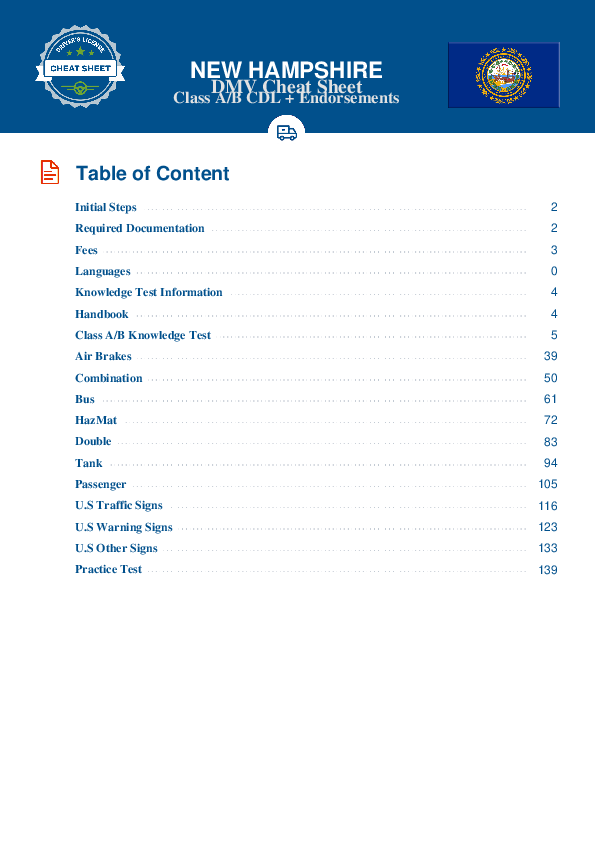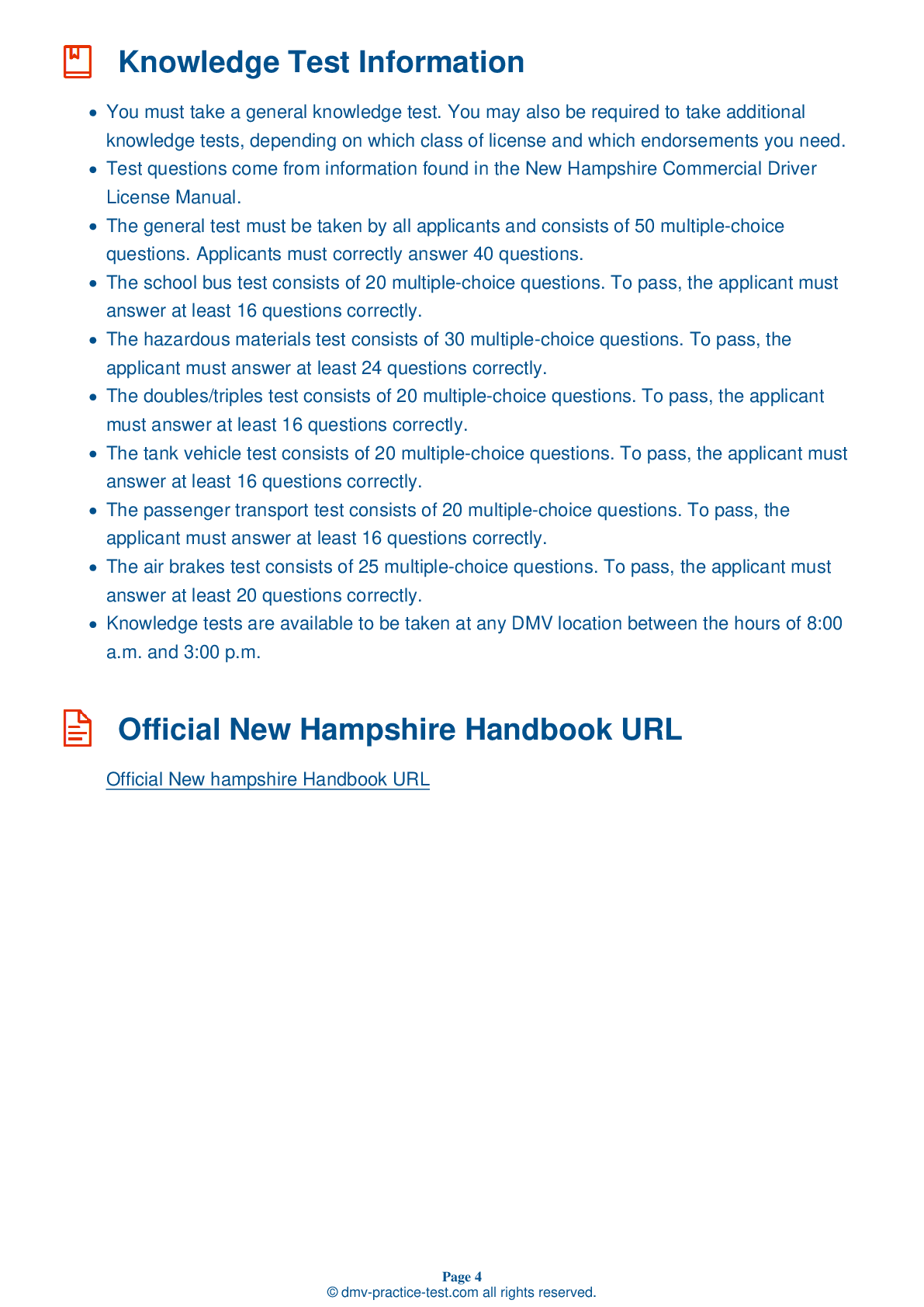Class B Driving Test | New Hampshire 2025 #2 Page 2 of 7
Train for FREE online with our New Hampshire class B license test. The official exam test consists of several obligatory parts, with all of them checking your knowledge of different blocks of road rules. If you need to obtain a NH CDL class B permit in 2025, practice as much as possible. Free sample tests published on our website will help you check and improve your knowledge and boost your grades. Please bear in mind that CDL class B requirements may vary from state to state.
8 . When traveling on a downgrade, a vehicle will:
On a downgrade, the force of gravity will cause a vehicle to speed up. Adjust your speed before approaching a hill to reduce overuse of your brakes.
9 . On a slippery surface, stopping distance:
A vehicle's regular stopping distance increases on slippery surfaces because there is less available traction.
10 . How should you brake if your vehicle loses its ABS?
An Anti-Lock Braking System (ABS) is in place as an addition to a braking system. It intervenes to prevent brakes from locking up during hard braking. If ABS is not working, the basic braking functions on a vehicle will still remain, so the driver can continue to drive and brake normally.
11 . If a driver begins to feel fatigued while driving, they should:
If you begin to feel drowsy while driving, the only safe response is to safely leave the road and get some sleep. Using artificial stimulants can be dangerous because they may cause extreme fatigue when they begin to wear off.
12 . When braking while ABS is activated, you should:
In a vehicle equipped with an Anti-Lock Braking System (ABS), you should apply the brakes in the same manner that you would if you were driving without ABS.
13 . When you must travel down a grade, when should you switch into a lower gear?
Before starting down a hill, you should shift into a lower gear. This will help get your vehicle to a speed that you can control without having to use your brakes too much.
14 . If being tailgated while driving a large vehicle, you should do all of the following, except:
If you are being tailgated, avoid making quick changes in speed and open up your following distance. This will make it easier for the tailgater to pass you. Increasing your speed is not a good idea because the driver may continue to tailgate you at the higher speed, only increasing the danger.
See the exact questions that will be on the 2025 New Hampshire DMV exam.
99.2% of people who use the cheat sheet pass the FIRST TIME
Lillian MCcranie explains how our CDL study guide was helpful in passing the exam and recommends it to everyone.
Cameron tells us how he purchased the CDL exam, and found it to be a useful tool which helped him pass the exam and find a job.



